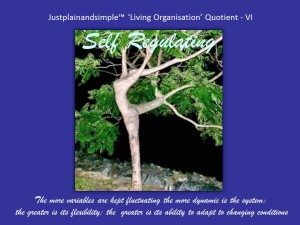
3,186 total views, 4 views today
No Tall Claims. No Big Promises. No Lofty Vision.
Justplainandsimple ….. Serving to Help Realise
Business, Professional and Personal Potential …..


3,186 total views, 4 views today
 Let’s ask any entrepreneur the question : Why does your business exist ??
Let’s ask any entrepreneur the question : Why does your business exist ??
Their answers will get bucketed in only two Justplainandsimple™ reasons and in this order :
1)Creating Value for the customer
2)Creating ROI for the Owner
Only if the customers see value, will more of them buy your products and services (n); more frequently (f) and pay you more (p). The cumulative product of these is Revenue (R) i.e. n X f X p. So, value creation is a necessary condition !!
If the entrepreneur does not make a return on his/her resources (after and inspite of and because of providing Value to the customer), there is no reason for them to be in business. Simply put, there could be other uses they can put their resources to, with better risk weighted returns.
However, one could argue, that there is another case/option of Creating Value without looking for returns. A ‘charity/donation’ framework !? This has different implications, which may not be sustainable too. A lot of ‘not for profit’ organisations get caught in this trap. Let’s use this as an example at one end of the spectrum to demonstrate a point.
The logic works like this. It is a ‘not for profit’ organisation, so profit is not an objective to be sought.
Hence, starting at the top of the P&L, fine tuning and polishing the Value Offering to yield optimal R = n X f X p loses significance. This leads to suboptimal product/service offerings coming from this sector. No wonder so many ‘charity’ organisations have gathered a connotation of sub standard offerings.
Next casualty in line is productivity. Since it is ‘not for profit’, squeezing every expense line for productivity is not key. This takes a very critical role in a ‘for profit’ organization.
Hence what flows down at the base of the P&L, is ‘NO PROFIT’ ….. a self fulfilling prophecy !! From where do resources come for funding the loss or resources for growing the scale or further expansion of scope ?? More donation !! Sustainability is affected.
What is needed to flow out, even in such an example of a ‘not for profit’, is a SURPLUS at the base of the P&L after revenues and expenses have been churned. Whatever purpose that surplus maybe put to. Not for returns to owners, but for building scale, for reaching more beneficiaries, for further investments ….. !?
So whether we call it ‘profit’ or ‘surplus’ the significance is clear. QED.
Reasonable surplus or how much is enough, is a matter for another debate related to human greed and we keep it out of the scope of this discussion for the time being. Needless to say, Profit or surplus is a necessary but not sufficient condition. Therefore we have new concepts of triple bottom line coming up : profit, people and planet.
If profit is a requirement that has to be met, we get answers in the way we define it. Right in the beginning of this article, I indicated the second reason for the existence of businesses to be ‘creating ROI for the owner’.
The entrepreneur is looking for ROI. So relative ROIs from different opportunities are compared and investments made. Defining profit this way, helps us in understanding and resolving this issue creatively.
Profit cannot be made mathematically by increasing prices and cutting expenses. Pricing the product to the market is the key. More customers (n) are not going to pay more (p) or buy more frequently (f) than the value they attach to the offering.
Also, you cannot cost cut your way to glory. There will be expenses, there will be costs. Understanding ‘what adds most value to the customer’, to empathise, allows the business to focus and allocate expenses in areas that are important for value creation and hence to reap benefits of leverage and productivity ….. this is rewarded by the right customers (n) buying at the right frequency (f) at the right price (p) !!
Fundamentally, business is ‘philosophy’, not mathematics.
The answer to ‘Profits in low income markets’ therefore lies in creativity and innovation. To find ways of increasing productivity, efficiency and effectiveness.
Nature teaches us various ways in which a dynamic balance is maintained in ecosystems. An organism (organization) picks up signals from its environment (market reading) and makes structural changes within to respond intelligently and in turn influences the environment. This enables it to learn, co-exist and evolve continuously. The story of evolution is a story of collaboration of species and co-existing/co-evolving symbiotically.
Who influences whom then ? The environment and organism keep the whole ecosystem in a harmonious dynamic balance, playing a continuous dance !! So also should organisations and low income markets ….. a continuous dance of celebrating harmony in an interdependent partnership ….. with flexibility and respecting and honouring integrity and diversity in action !!
This was first published in the Ennovent Blog: Innovations for Sustainability
3,434 total views, 3 views today
 Just as your car runs more smoothly and requires less energy to go faster and farther when the wheels are in perfect alignment, you perform better when your thoughts, feelings, emotions, goals, and values are in balance.
Just as your car runs more smoothly and requires less energy to go faster and farther when the wheels are in perfect alignment, you perform better when your thoughts, feelings, emotions, goals, and values are in balance.
I used to own a relatively premium brand of car. Good branding and technology focus !! However, fewer service centers (a function of numbers I thought) made access inconvenient. I finally switched due to the company’s apathetic approach to after sales service.
So I settled in for a ‘less’ premium brand. My Justplainandsimple™ decision was based on the company’s strong communication on ‘Customer Orientation’, ‘Trust’ and the assurance of a huge service network. The experience of regular initial free service, with pick ups and drops by the very ‘competent’ service centre, was quite satisfying, I must say. Continue reading
6,112 total views, 8 views today
How is it that certain teams achieve extraordinary excellence, day after day, year after year and manage to stay committed to each other, their customers and their organization’s mission ?
A healthcare start up ….. successful doctors, experienced healthcare professionals and a seasoned healthcare entrepreneur got together. Hired people with rich experience in healthcare. Much excitement and hope !! Great Aspirations …..
The only issue ….. aspirations were on different vectors.
Six months from start, issues erupted. Differences on ‘What to do’?; ‘How to do ?’; ‘Who does ?’ ….. Everything.
Difference of opinion should be welcome and healthy discussions throw up agreed and effective directions.
Instead bitterness creeped in; operations stalled; could not see/talk to each other. All within one year.
Reason : Each of the ‘promoters/founders’ joined in with a different agenda, thought process, assumptions. On the surface all looked ‘Rosy’ ….. A new start up healthcare business in the age of healthcare, by people experienced healthcare.!!
The core was never discussed. A ‘Shared Mission’ was never there.
Reasons to get together were as many as the number of people who got together ….. valuation in ‘X’ years, gain startup credentials, clinical excellence, long term business, more leisure time ….. and so on
The mission was aborted within 18 months and all went their own ways …..
In another well run set up, absence of a shared sense of Values and Direction created a severe deadlock, stalling all operations for a long period of time, demotivating the team, forcing many to leave.
The fact is that while all teams are groups, not all groups are teams. A group becomes a true team only when its members support and enhance each other’s performance and contributions … when they work together to achieve results that are bigger and better than those that could be realized individually
Build a team of people with complementary skills who are committed to a common purpose, performance goals, and approach for which they hold themselves mutually accountable ~ team definition by Katzenbach/Smith
Just as your car runs more smoothly and requires less energy to go faster and farther when the wheels are in perfect alignment, you perform better when your thoughts, feelings, emotions, goals, and values are in balance.
2,221 total views, 2 views today
 There is so much buzz surrounding healthcare today. And rightly so. Healthcare is on a growth path.
There is so much buzz surrounding healthcare today. And rightly so. Healthcare is on a growth path.
All eyes are focused on the healthcare success stories. For gaining valuable learnings and for valuation gains !!
Lost somewhere in the melee are stories of slips that can give equally significant insights.
Without disclosing the identity, here is one such case …..
A new unit, started slow and steady with one healthcare speciality and progressed well. Led by an enthusiastic entrepreneur, full of passion and ambition, ready to take risks. All the correct ingredients it seems.
The enthusiasm led to related diversification into other healthcare verticals.
Two years into this mode, growth started slowing down and profits started getting eroded.
Good brand equity, doctors, patient satisfaction, advertising spends, infrastructure ….. nothing seemed to be wrong.
Root cause analysis brought up a peculiar core issue, generally very difficult to accept by any business leader ….. that the leader lacked the ability to handle multiple business operations.
Adaptive Thinking, Empowerment with Accountability, Execution Excellence, Networking and Executive Maturity were the development areas that the leader could have sought help in and built on, to Realise Business, Professional and Personal Potential.
More cases …..
3,381 total views, 2 views today